In this blog, I share four ways in which publishers were challenged in rethinking the impact of academic publishing.
‘Impact’ has become a buzzword in academia. It is key to the UK Research Excellence Framework and it’s regarded as a key metric of success for research.
For the publishing world, ‘impact’ is an equally important and frequently used word. Yet, most often, it is reduced to metrics and data. In December I had the opportunity to engage in a meaningful discussion about impact with publishers around the world at #STMWeek 2019.
Ideas Factory on Making Research Impactful
STM Week 2019 was a three-day event, annually organised by STM Association, the ‘global voice for scholarly publishing’. Toby Green, Managing Director at Coherent Digital, led the third day with the ‘Ideas Factory on Making Research Impactful’. As the former Head of Publishing at OECD, Toby saw this format in action at OECD and adopted it for STM Week:
“The Ideas Factory format is original and informal. Don’t expect to be sitting in an auditorium – because you’ll spend most of the day on your feet working together in small teams at a whiteboard. Don’t expect to be tweeting and checking your inbox – Do expect to be fully engaged, to participate, to meet and create ideas with new colleagues – and to have fun.”
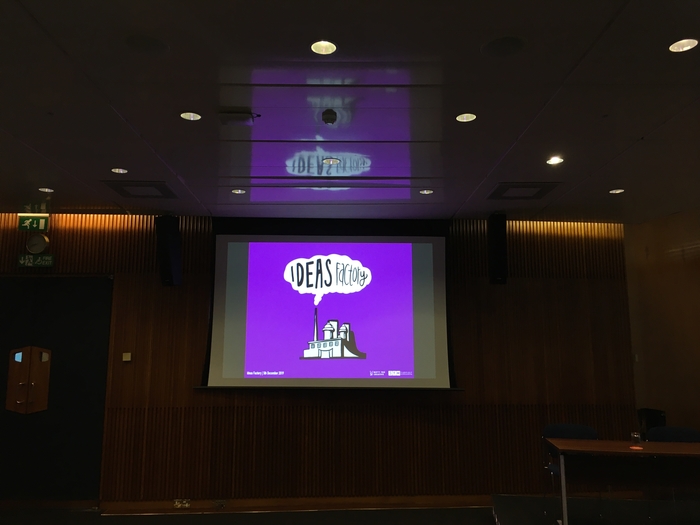
Toby invited a panel of four impact experts and moderators to propose a challenge for publishers:
- Session 1: What is Impact Anyway? Led by José de Buerba, Head of the Impact Evaluation Team at the World Bank
- Session 2: How can YOU create impact for your stakeholders? Led by Mihaela Gruia, Founder and Director, Research Retold
- Session 3: Measuring Impact. Led by Stefano Contratto, Monitoring and Impact Analyst, OECD
- Session 4: Funnelling impact on a tiny budget. Led by Alexa Colella, Marketing Manager, Journals at University of Illinois Press
The participants worked in different groups for each session and solved various tasks from the moderators.
So today, I got to to a really cool thing with a really cool group of people. At #STMideasfactory, @TobyABGreen, Jose De Buerba, @ResearchRetold, Stefano Contratto, and @NiftyFoxCreativ we spent the whole day talking about impact. @STMAssoc 1/n
— A.A.C (@weequipped) December 5, 2019
Lastly, and most excitingly, the sessions were visually illustrated by Laura Evans from Nifty Fox Creative. Each session had a visual summary that captured the key points and ideas.
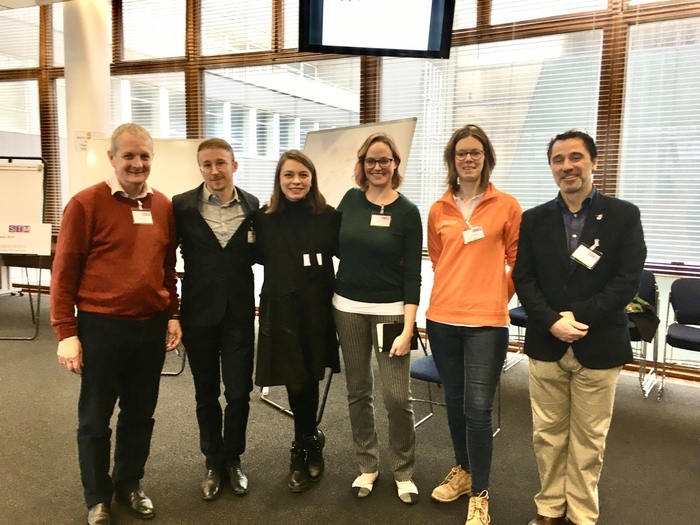
Rethinking impact in academic publishing #STMWeek 2019
1. What is ‘impact’ anyway?
José had the difficult task of kicking off the day, by asking publishers to rethink the very definition of impact.
He proposed a logic model used at the World Bank based on inputs, outcomes, outputs and impact.
After explaining the model, José assigned a fictional persona for each group and asked participants to think of the outcomes and impact that they would be looking for. The personas had different professional roles and goals, yet they all shared the need to have a positive impact on the world.
2. How can YOU create impact for your stakeholders?
For the second session, my aim was to challenge publishers to put themselves in the shoes of academics and to think of ways in which they can help them increase the impact of their work.
Inspired by conversations with our community of researchers, I adopted the following definition of impact:
“Impact as affecting policy, changing the way non-academic groups think, correcting misconceptions and strengthening evidence-bases.”
To kick off this ‘empathy exercise’ I asked them:
“From a researcher’s point of view, what are the challenges/barriers for increasing the impact of your research?”
The discussion points offered were:
- Basic understanding of the research
- Language barriers, written in an academic format
- Lack of time
- Access challenges
- The format is not easily accessible
- Publishing in journals is linked to tenure vs impact activities
- Lack of career incentives to spend time on generating/increasing impact
- Attention economy (information overload)
- Lack of skills to ‘translate’ the findings in accessible ways
- Not connected to social networks
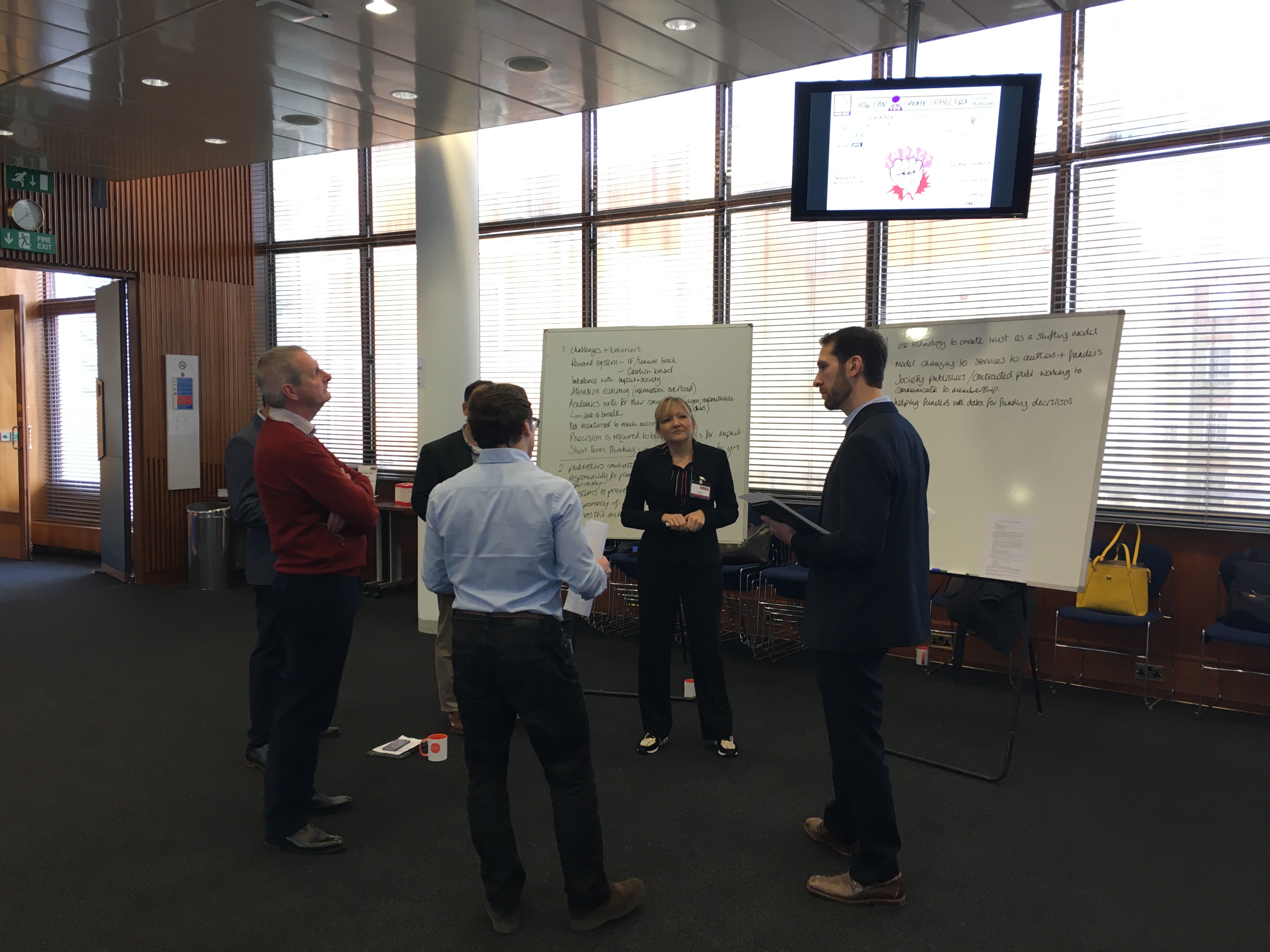
The role of publishers in tackling disinformation
“Scientists get almost as much coverage in mainstream media as contrarians, yet if social media is included, those who spread disinformation get 49% more coverage (Petersen et al, 2019). Society is being misled on a scale hitherto unseen.” (STM website)
As huge repositories of knowledge, I was keen to see what the publishers’ views were on their role in tackling disinformation. The room was split on this topic. On the one hand, some groups believe that publishers could meaningfully contribute to tackling disinformation. In line with this, they saw it as their job to build relationships with trusted press, call out the press when something is misreported, and highlight and promote strong research. In addition, they saw it as their role to defend and support the role of evidence-based decision making and highlight the value of peer-review as a measure of quality and robustness.
On the other hand, some groups were finding it difficult to think of timely efforts that could generate significant results in tackling disinformation. Given the speed with which information travels, it can be tough to provide ‘rapid response’ results’ that can accurately address the source and effects of disinformation. Moreover, they expressed concerns as to where funding for these activities would come from and whether perhaps research funders (i.e. the Research Council) would be best placed to engage in such activities.
We’ve previously discussed the topic of disinformation when we wrote about our Leeds Digital Festival meetup

Activities publishers can do to help researchers
In the last part of my session, I offered the group an example of an academic team that had just finished a research project with huge potential for impact on the public health systems of low and middle-income countries. I asked them to think about how they could help this team engage with stakeholders beyond academia.
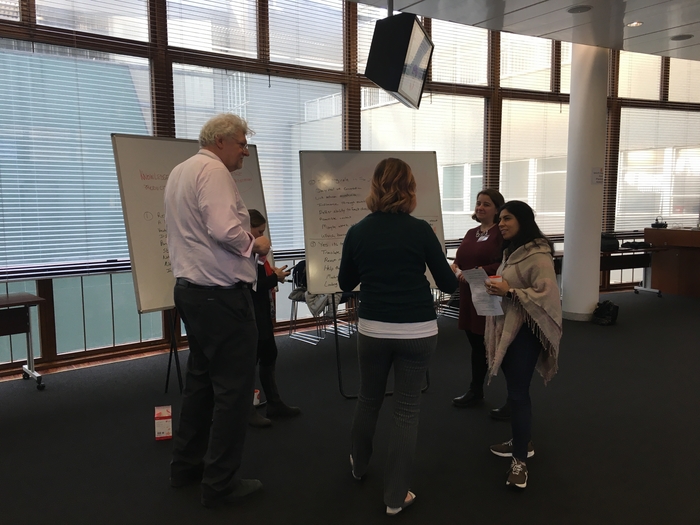
They offered ideas based on the services that some publishers already offer, as well as new ideas that they would be keen to experiment with in the future, such as:
- Write insights for broader audiences
- Work with the author and the media, giving them media training skills
- Leverage multimedia and produce infographics, videos, press conferences, videos, podcasts and/on impactful blog posts
- Relate research to real stories and people on the ground
- Help broker introductions to organisations that care about the issue
- Revisiting the marketing and communication strategy of the research team
- Help them with meetings and making connections
The overall concern for this part of the discussion was, again, that of funding and whether the cost for these services would be supported by the academic institutions or the research funders.
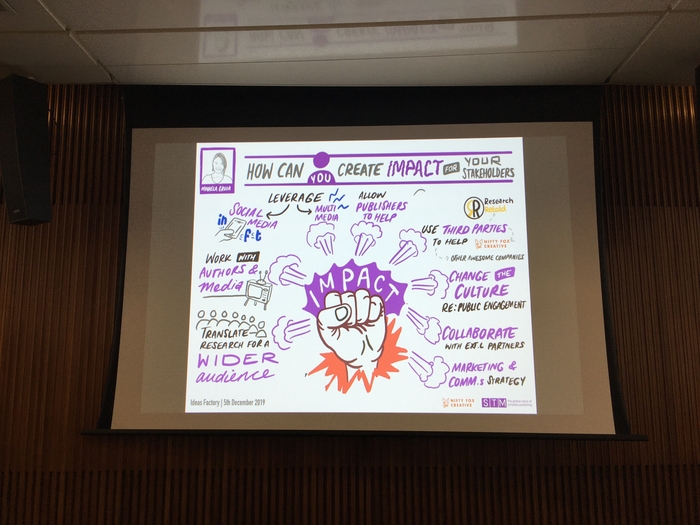
3. Measuring Impact
The next session was led by Stefano who introduced the concept of a KPI (Key Performance Indicator) in the context of research and publishing.
Stefano got the groups to work on three different case studies, each with different aims and objectives, and to outline different KPIs that would help them reach those goals along the way.
The groups offered multi-layered approaches to measuring impact, in ways that challenged them to think differently and approach new ways.
4. Funnelling impact on a tiny budget
Alexa offered several golden insights from her role as Marketing Manager on how publishers can create impact for their journals and articles.
The main point was that of ‘piggybacking’ on existing trends online and plugging existing content into those debates. For example, if there is a trending global hashtag on Twitter related to International Women’s day, then it would help to highlight research articles published on related subjects and increase their visibility. Moreover, when doing this, using bite-size information and accessible and visual formats can really boost the visibility of that research piece and create more recognition for the authors.
In addition to these creative marketing tips, Alexa highlighted the importance of being able to speak differently to different audiences. In her session, participants had to rephrase the same message to three different audiences, challenging them to think of new ways of explaining the same thing. This is a useful exercise for any researcher looking to flex their muscle at articulating the complex messages of their work in accessible ways to different people. Moreover, the exercise highlights the importance of personalising your message based on your audience – a key skill for effective research communication.
Conclusion
Overall, the Ideas Factory at STM Week 2019 was a packed day of challenging and thought-provoking discussions. Thinking about how publishers can rethink impact involves a multi-layered discussion and the format was perfect for identifying new insights and ideas. We look forward to building on the connections we made on the day and here is a summary of the takeaways!
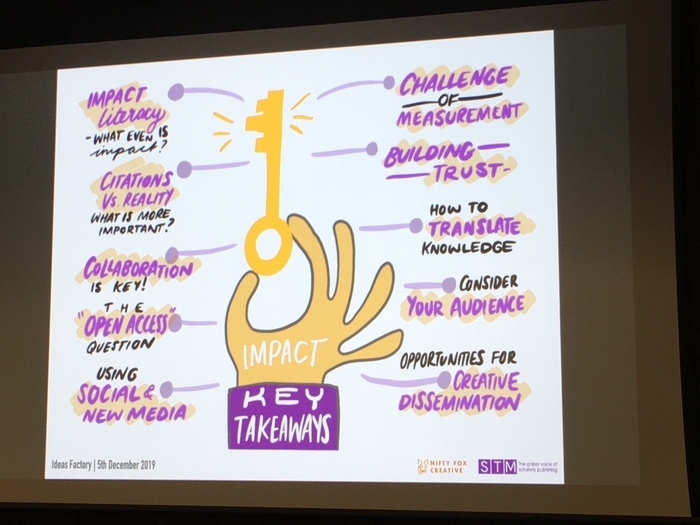
Thank you @STMAssoc for having us at the Ideas Factory #STMweek. Thank you to the team of impact experts that facilitated the sessions & to the participants for the engaging, rich discussions 🙌🏻@weequipped @Buerba37#rescomm #scicomm #publishers #impact #communications #research pic.twitter.com/WPXiwXJvHF
— Research Retold (@ResearchRetold) December 6, 2019
References
Petersen, A. M., Vincent, E. M., Westerling, A. LR. (2019) Discrepancy in scientific authority and media visibility of climate change scientists and contrarians, Nature Communications, 10: 3502
